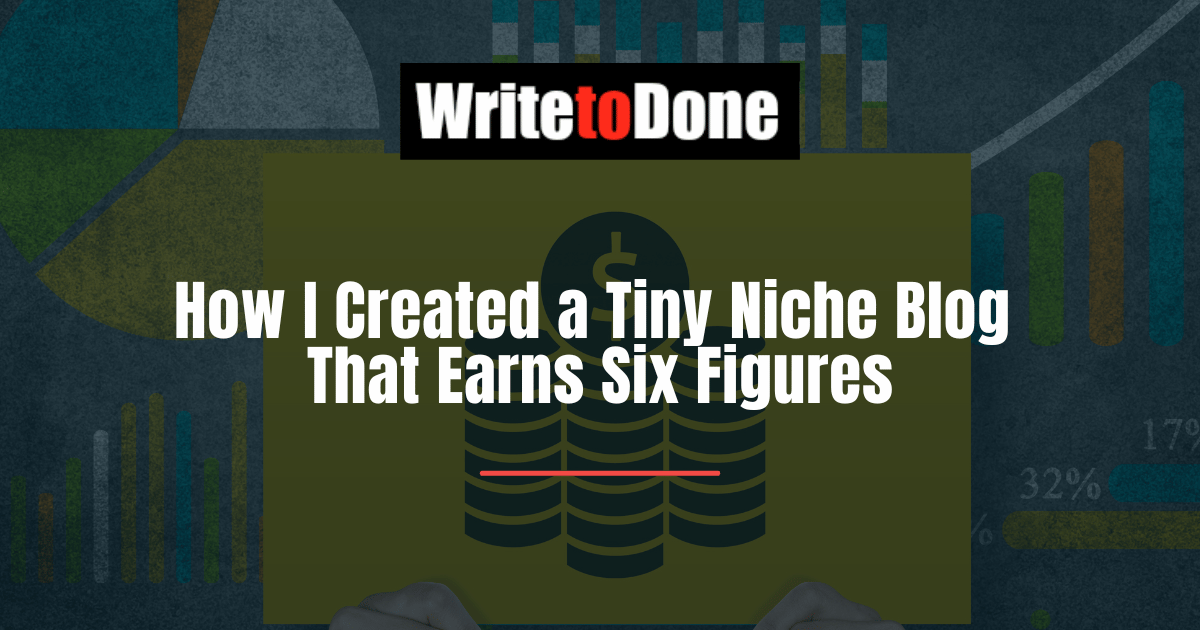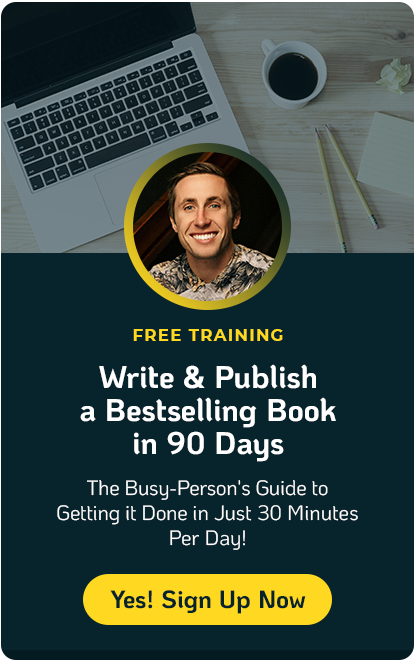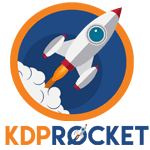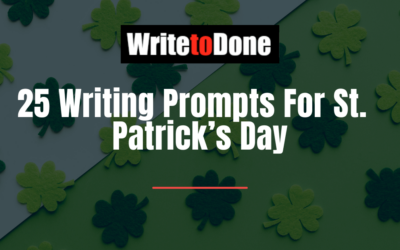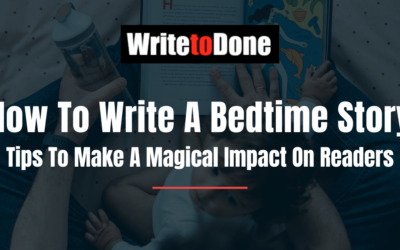When I got this tweet in spring 2010, everything started to change for my blog.
Most “how I created my successful blog” stories are about how a blogger quickly skyrocketed to 100,000 subscribers or a million monthly pageviews.
Then they started selling ebooks or courses or iPods, and the money poured in.
My story isn’t anything like that.
I started my Make a Living Writing blog in 2008, and it took until 2011 before it earned anything substantial.
My blog had just a few hundred subscribers when it started to earn a little, perhaps $500-$1,000 a month. When it broke six figures, it had less than 2,000.
Even today, I’m barely over 5,000 subscribers. Relative to the superstar bloggers, my blog is still barely a blip.
I currently get about 25,000 unique visitors a month — far better than the majority of blogs, but certainly not impressive numbers. Yet the blog now earns all the income I need, and more.
How do I earn so well from such a small audience?
Short version:
- I found a way to help readers solve a critical need — I help them earn more money.
- I won their trust and loyalty by offering a lot of free help.
- I built a highly engaged audience by constantly responding to my readers and asking them questions.
- I looked for ways to develop paid products that would deliver more advanced learning.
- Through trial and error, I discovered what types of products readers wanted to buy from me.
- I developed and sold those products.
- I also sold a few select, relevant affiliate products made by others I could personally recommend.
Full version: Here are the 10 key elements I believe went into creating my financially successful blog with only a small audience:
[thrive_text_block color=”blue” headline=””]Want To Grow Your Blog From $0 To $1000 Per Month? Yes! Show Me How! [/thrive_text_block]
1. Passion
My blog began because I was simply enraged by the low rates writers were getting paid from many online content mills.
I’d been a freelance writer, and was earning well. I thought maybe I could help other writers — no, that’s wrong. I felt compelled to speak out against something I saw as flat-out evil, and to help writers find better pay.
I’d briefly ghosted a blog for a business owner, so I had a vague idea what a blog was. When I discovered Zen Habits and Leo Babauta, I realized I could start my own blog and use it to help other writers.
I was so excited I literally could not sleep at night, thinking of all the posts I wanted to write.
I didn’t know it at the time, but that orientation of focusing on a single topic — coupled with an attitude of writing to serve readers — is critical to monetizing a blog.
To start with, I had the dim thought that if I wrote enough blog posts, maybe I could turn the posts into an ebook and make a bunch of money from it.
I had a lot to learn.
2. Learn
Speaking of things I didn’t know…I had strong writing skills, but was trained in the world of print journalism. I needed to learn everything about blogging and promoting a blog. I’d never sold anything to anyone!
I became a crazy learning sponge, reading voraciously from sites such as Copyblogger and Problogger. I soon learned some of the key elements of blog marketing, including:
- Strong headlines. Two resources that are vital and that I still refer to are Jon Morrow’s Headline Hacks report, and Sean D’Souza’s report Why Do Most Headlines Fail?. Writing stronger headlines made a big difference in drawing a crowd.
- Compelling topics. A post I read early on from The Blog Herald helped me focus topics on what readers would comment and respond to — The 18 Types of Posts That Get More Comments. I started to interact with readers and build relationships with them.
- Blog design basics. At first I thought I didn’t have to care how my blog looked — it was about writing, after all! But I quickly discovered that the more clean and appealing I made my design, the more readers I acquired.
- Email subscription. For quite a while, there was no way to subscribe to my blog! I learned that RSS subscribers were problematic because you don’t get their email address and can’t contact them. I signed up for Mailchimp and got a subscription form.
Any chance I saw to grab a free training online, read a blog post, or talk to an expert who could teach me something about blogging success, I did it.
3. Work hard
Technology makes me cry. I’m not good at it.
But I could tell from the start that if I wanted to blog, I would have to learn how to use it or pay a fortune to professionals…which wasn’t really an option in my budget!
I conquered WordPress. I learned to put up photos and install widgets and plug-ins. Later, I’d learn to use Webinar presentation and video-editing platforms so I could put on Webinars.
For about 18 months, I clocked an 8 to midnight shift after my children went to sleep, mostly wrestling with technology and writing blog posts.
As my blog grew, I moved it in late 2009 to its own site, from its original home on my writer portfolio website. That signaled my growing belief that my blog had the potential to be a business of its own.
4. Listen
Once I had subscribers and a few comments coming in, I started asking questions of my readers at the end of posts. I took surveys. I had contests and gave prizes for the most revealing responses.
Why were they reading me? Where were they at in their writing lives? What were their obstacles to earning more?
The answers surprised me. I assumed my readers were all new writers, but that wasn’t the case. About half were new, but the other half were experienced writers who either hadn’t freelanced before, or weren’t earning well as freelancers.
Learning about my readers’ challenges helped me write more useful posts. I started doing regular mailbag posts, where I’d reprint questions readers had emailed me and answer them.
5. Social media
One of the things I learned was how to promote my blog on Twitter. I was connecting with and learning from interesting people, and sharing their stuff…and my own blog posts.
One day in May 2010, I got the tweet you see above, from Copyblogger associate editor Jon Morrow. It led to a phone conversation and an offer to guest post on Copyblogger.
What an exciting yet terrifying opportunity! I only had maybe 100 subscribers to my blog at the time. I felt like a midget in the land of the giants.
But I worked hard with Jon — I actually wrote and discarded a lengthy initial post before writing the one he accepted. That post made it into Best of Copyblogger 2010 and brought many new readers to my blog. But the funny thing was, I didn’t get a lot of new subscribers. My site wasn’t set up to convert them yet.
I was in over my head. I needed to learn a lot more about blogging.
That’s when I joined A-List Blogging.
6. Mentors
When I got in A-List Blogging, I couldn’t believe what an amazing resource it was! They had a post or a video training about every imaginable aspect of blogging.
And there were forums where you could ask questions! There’s a counter, so I can tell you the exact number I asked: 386.
I started working on my design. I changed my tagline. I began posting more frequently, going from one a week to twice and finally to my current level, three times a week.
To sum up, I got serious about making my blog an incredibly useful and visually appealing resource for my readers.
Probably the most important thing I learned in A-List was how to sell in a way that wasn’t obnoxious. I’d been baffled by that, but knew I’d never want to slap up ads or send daily marketing emails.
Soon, I had a Products I Love page, and was selling A-List affiliate memberships, along with my own one-shot Webinar trainings for $47. By the end of 2010, the blog was making a little money.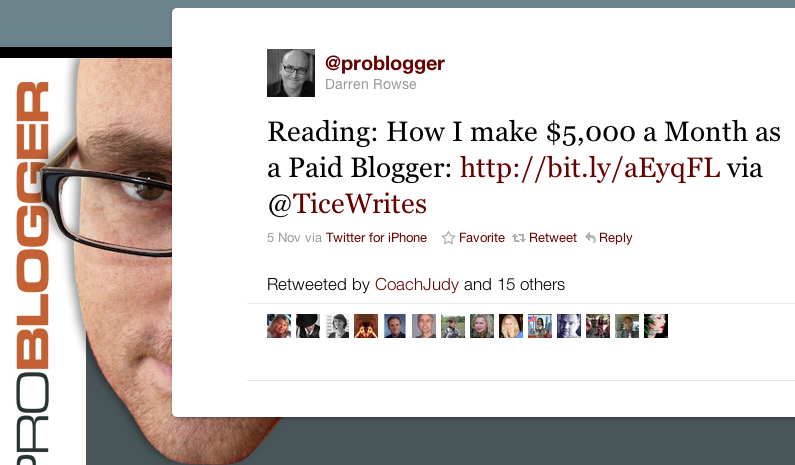
I connected with more mentors and got direct feedback to improve my blog. Derek Halpern from Social Triggers reached out to me and gave me valuable design tips. I streamlined my sidebar, removing extraneous items. I got a bigger subscription box and created a free report for subscribers.
Jon Morrow taught me how to target a blog post to a top blogger and get them to share it on Twitter. The result was this retweet at left, from Problogger’s Darren Rowse.
It brought so much traffic, it crashed my site. My baby blog was growing up.
Mary Jaksch even subscribed! That blew my mind.
7. A contest
Then one day in late 2010, Mary did something that surprised me even more.
She emailed me and told me about the Top 10 Blogs for Writers contest.
She thought I should enter. I thought she was plumb crazy, but I’d had good luck winning writing contests as a freelancer, so I went for it.
Winning top 10 blogs that first time, at the end of 2010, marked the beginning of my blog as a viable money-earner. I went quickly from 300 subscribers to 1,000, and began selling my ebook and Webinars, along with my affiliate products.
I met a bunch of other great bloggers — the other winners. One of them, Linda Formichelli of The Renegade Writer, would come to partner with me on courses and other projects and become a major factor in ramping up my blogging income.
8. Network in-person
My blog might have continued as a modest earner, except that Derek Halpern mentioned to me that he would be presenting at SOBCon, the Successful Online Business conference put on by Liz Strauss and Terry St. Marie. Going to SOBCon in Chicago would be the game-changer for my blog’s income.
Before SOBCon, I had a vague idea that maybe, there should be a paid-membership community for freelance writers, like A-List was for bloggers. That would allow me to reach more writers, teach more, and market less, compared with putting on one-off Webinars. But it seemed like a daunting thing to build and launch.
From my reader feedback, it was clear there was a need for a resource like this for freelancers — but was I the one to build it? Would people really join? I had a lot of doubts.
SOBCon was the shot in the arm I needed. I met a ton of high-powered bloggers and authors — Liz and Terry, Chris Garrett, Derek, Chris Guillebeau, Chris Brogan, Jonathan Fields, Michael Port, Carol Roth, Barry Moltz, and Tim Sanders, to name just a few. I got a massive shot of inspiration as I sat in mastermind sessions and heard presentations from these smart people.
And I came home resolved to launch a community for freelance writers in 90 days, confident that I now knew people who would support me and help me find the resources I needed to build it.
I polled my members and found out what they would want in such a community, and what they’d pay to join. Then, I designed the community to offer what they wanted, at the price they told me.
In July 2011, Freelance Writers Den launched. My dream was it might one day hit 500 members, if I toiled for many years…but it did that within the first year. Today, it’s above 600 members and growing.
While I imagined my ebook would be the big money-maker for my blog, readers told me they needed something else. And I listened.
9. Experiment and improve
Once I had a sense of what readers would buy, I began to experiment with prices and formats to find the sweet spot where I could help the most people while still earning well.
Writers liked live events…but liked recorded trainings they could watch on their own schedule more, I found.
A course priced at $297 could bring in just as much — and help more people — if I priced it at “pay what you want under $30.” My readers love half-price sales, too, and will buy more than twice as many units. I love finding these win-win situations.
I started the Den with some e-courses created from past blog posts, but quickly began to stuff the community with new, live trainings. Today, we have more than 100 hours of podcasts, and I frequently poll members to discover new features and services to add.
 How do I know when I’ve got it right? I get thank-you notes and raves from writers who’ve bought my products.
How do I know when I’ve got it right? I get thank-you notes and raves from writers who’ve bought my products.
10. Learn and connect
I continue to attend live events to build more relationships and learn from new and current mentors — this year, I already hit the New Media Expo and have a ticket for World Domination Summit. The relationships I’ve built in person have been the most transformative for my blog, and each time I come away with more ideas for how to improve it.
When you’ve got a small blog you want to earn a living from, you need highly engaged readers. If people take nothing else away from my story, that’s it. Talk to your readers, find out what they need, and deliver it.
If you can do that, you don’t need hundreds of thousands of people to make a living.
Then, keep on going. I’m still asking questions and learning from my readers and my mentors, and looking for ways to make my blog and my community even more useful.
How do you engage your blog readers? Leave a comment and tell us your strategy.

